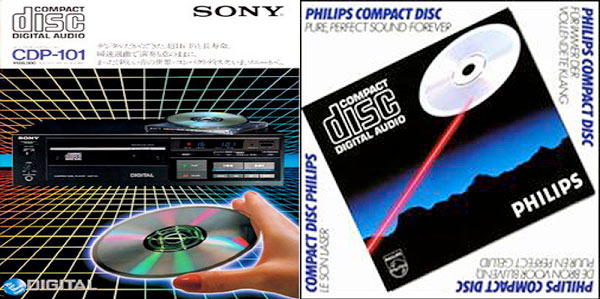Perfect Sound Forever
I received my latest copy of The Absolute Sound the other day and took a few moments to read through some of the reviews and articles. I especially enjoy the Letters section and leaned back in my chair to read a few. There they were, the words “Perfect Sound Forever” above a few paragraphs from John Harnick. He lamented some disparaging remarks made about the venerable CD in a previous issue and how its specifications are “not stuck in the 1970s”. Mr. Harnick believes that the CD format is alive and well and does a very good job of delivering high-end audio. And I agree with him…he’s right!
The “Perfect Sound Forever” thing was a marketing slogan and attempted to communicate the revolutionary change that compact discs were capable of delivering. Honestly, it wasn’t that far off the mark. Recall that Linn says on their website, “CDs were actually the lowest quality music format – even 8-track tape was capable of holding much more information than this optical media”, which is an absolutely ridiculous statement to make. Analog tape doesn’t even come close to reaching the fidelity potential of a CD. The Redbook specification hasn’t changed since the format was introduced back in 1982. It doesn’t need to.
I’m talking about the potential of the delivery container…a PCM encoded audio recording at 44.1 kHz sampling rate and 16-bit linear words. This means that a compact disc has the potential to reproduce 20-20 kHz and up to around 96 dB of dynamic range. Get your owners manuals out and compare that to analog tape or vinyl LPs. There’s some truth to the poorly recorded and mastered CD that were issued all those years ago but that wasn’t the fault of the format. That was because nobody was any good at working with the new format.
Mr. Harnick does stumble on a couple of points. When he states that CDs “contain frequencies beyond our hearing and dynamic range greater than a symphony orchestra”, he’s stretching a little. I know I’ve measured the dynamic range of my recording of the Ravel “Bolero” and Respighi’s “Pines of Rome” at over 96 dB…but let’s not quibble. I’ll leave the ultrasonics question alone right now.
His last paragraph challenges the validity of SACD and DSD. He states, “I’d like to thank SACD for pretending to be different – and pretending to be a high-resolution music format.” I’ll let you read the rest of the letter in the new issue but ,in fact, he’s got it about right.
But what does the editor say in response? He basically casts Mr. Harnick’s letter and claims aside with a few flip remarks and closes by saying, “Mr. Harnick has been riding the hobby horse of CD’s perfection for years. A single comparison of a high-resolution file and that file downconverted to 44.1 kHz/16-bits should dispel for any open-minded listener the quaint notion that there’s no need for improvement over the CD.”
Knowing that I have exactly that challenge available on the FTP site, I think it would be fun to put it to the test. If you download Laurence Juber’s “Mosaic” track at 96 kHz/24-bits and one of the 44.1 kHz/16-bit version (I made many using slightly different sample rate conversion methods) and compare them, what do you hear? Can you tell the difference? I can tell you without the right equipment or a very high-end set of phones…it is extremely difficult. It’s not a “quaint notion” at all. I’d like to have Robert Harley try to tell them apart.
I know this may sound strange coming from the guy that cheers for ultrasonics and such. It’s the lack of fatigue that I feel after listening to real high-resolution audio for hours that convinces me that the extra octave is worth it.
CD may not be the “perfect sound forever” that Sony and Phillips advertised back in the 80s but it was certainly capable of fidelity way beyond the 8-track tape AND even analog tape and vinyl LPs. Really. And it does just about as good as SACD.

